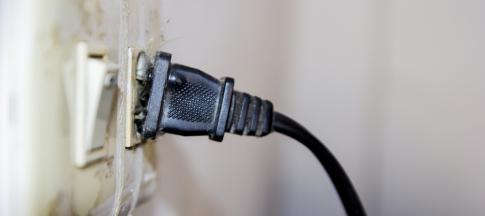
Below, we discuss three common home insurance claims: what they are, how to avoid them and if they’re covered.
Boiler emergencies
Boilers are commonly involved in household claims. Leaking and dripping are frequent issues, while loss of pressure and problems with efficient heating also top the list.
How to keep your boiler in top condition
- Bleed your radiators – this releases any air and allows your boiler to work more efficiently and smoothly
- Service your boiler regularly – last year, Admiral customers paid an average of £203.87 in repair costs for their boilers
- Re-pressurise your boiler – check your instruction manual or contact a trained professional if you’re unsure how to do it
- Prevent frozen pipes – you can avoid boiler blockages with a few small DIY checks throughout the year
Escape of water
Whether it’s a result of burst pipes or a leaky washing machine, sometimes escape of water damage is unavoidable, and even prevention methods may not always work.
Homeowners claim for different types of escape of water damage – everything from ruined furniture to a flooded living room.
It’s a major part of some cover types, like trace and access cover, which deals with sourcing the leak.
Signs of a leak in the home
Some of the signs you might have a leak include:
- decrease in water pressure
- hearing running water in places you don’t expect it
- mould and damp patches
- increased water bill
- seeing running water or wet patches around the house
Not all escape of water claims are severe. Smaller cases need cleaning and drying out, which you can speed up by opening the doors and windows to help air circulate.
What to do if you have a leak
If you suspect a leak and it’s safe to do so, you should:
- turn off the primary water supply to your home to stop the leak
- switch off the power and avoid electrical appliances – contact an electrician first if you need to stand in water to turn off the main electricity
- take photos of the damage
- if you have Home Emergency or Home Emergency Extra cover on your policy, visit our Make a Claim page or claim in MyAccount, and we can help you find a suitable service provider
For leaks that need more attention, contact a professional to strip out damaged furniture and fixtures and start the repairs.
Getting your home back to normal after escape of water can take time, so you may need to seek alternative accommodation during the repair process, depending on how severe the damage is.
How to prevent escape of water
- Find your home’s stopcock and check how to switch it on and off
- Invest in a pipe and stud finder to find any pipes behind walls or floorboards while doing DIY projects
- Keep your gutters and downspouts clean and clear
- Wrap or ‘lag’ your pipes to help avoid frozen pipes
House fires
House fires can be impossible to predict, but many are caused by misusing appliances, cooking or electrical problems such as poor wiring.
How to reduce the risk of a house fire:
- Keep matches or lighters out of the reach of children
- If you smoke cigarettes, extinguish them in an ashtray away from flammable items
- Never leave candles unattended and light them on a flat surface away from the window and flammable items
- Regularly clean your washing machine and tumble dryer filters to prevent build-up
- Don’t leave electrical devices on, including electric blankets, while you’re out of the house
- Keep your oven clean, and be careful of wearing loose clothing if you’re cooking on a gas stove
Make sure your smoke alarms are up-to-date and working. It’s a simple, quick test to make sure the batteries are working properly. You should aim to change them at least once a year.
Home insurance
While these incidents are uncommon, they can be very expensive. Having home insurance can cover the costs should the worst happen.
Knowing which cover is right for your home can be confusing, so we’ve created this guide to buying home insurance to make things clearer. If you’re still unsure, speak to your insurer.
Home Emergency and Home Emergency Extra cover
If you already have home insurance, then you could think about adding Home Emergency cover to your policy.
Home Emergency cover is an add-on that protects you against unexpected incidents by temporarily repairing the damage.
It covers things like:
- boiler and central heating
- plumbing and drainage emergencies
The claims limit is £500. Don't forget, limits and exclusions always apply here!
Home Emergency Extra cover
We also have Home Emergency Extra cover. This covers all the above but has a claims limit of £1,000 and includes cover for emergencies, including roofing and pest infestations.
It also offers £250 towards a new boiler if it'll cost more to fix your boiler than to replace it. You need to report the incident within 4 days of discovering the emergency. Make sure you read your policy book before making a claim to see what's covered.
Don't forget, limits and exclusions always apply here!


